I have an old USA made General 170 Straight Tap Wrench in a handy 7 inch size that works well for taps 1/4" and under. Even though it has seen a bunch of use, it still works fine except for one major defect: whenever the jaws are opened the moving jaw falls out from the wrench. This can still be a good tool again and it deserves a repair so it can be used for another fifty years.
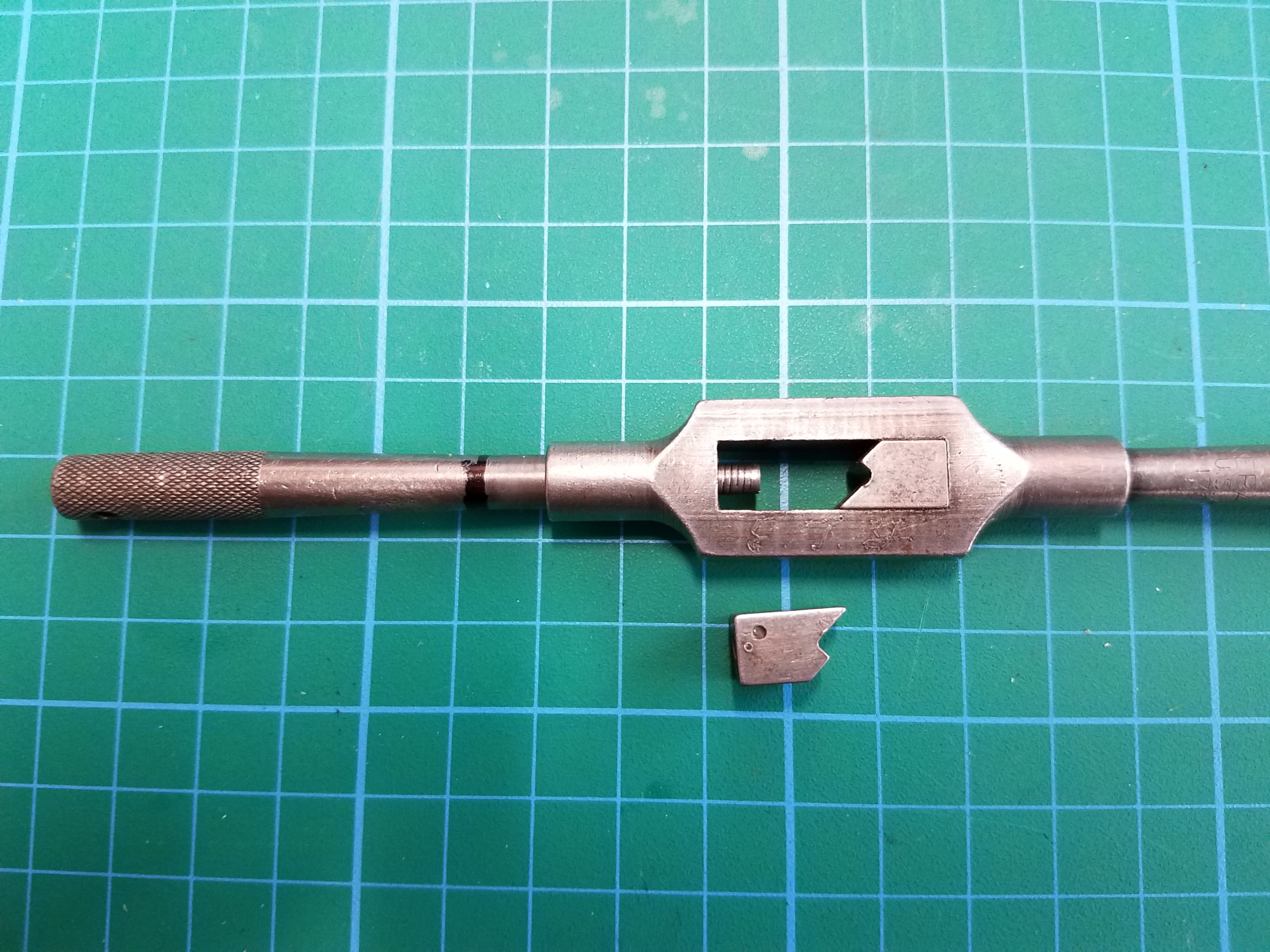
The problem with this tap wrench is that the threads on the end of the handle for the moving jaw are completely knackered and worn away. The way this style of tap wrench works is that the handle has a 12-32 TPI right handed thread that screws into the middle section or jaw holder. Right after that section of thread is a 8-32 TPI left handed thread that screws into the moving jaw. Because of the opposite threads, when you screw the handle in or out of the jaw holder the moving jaw follows along.
For the repair, the damaged section of thread will be removed from the handle and replaced with a new section of rod threaded on the lathe.
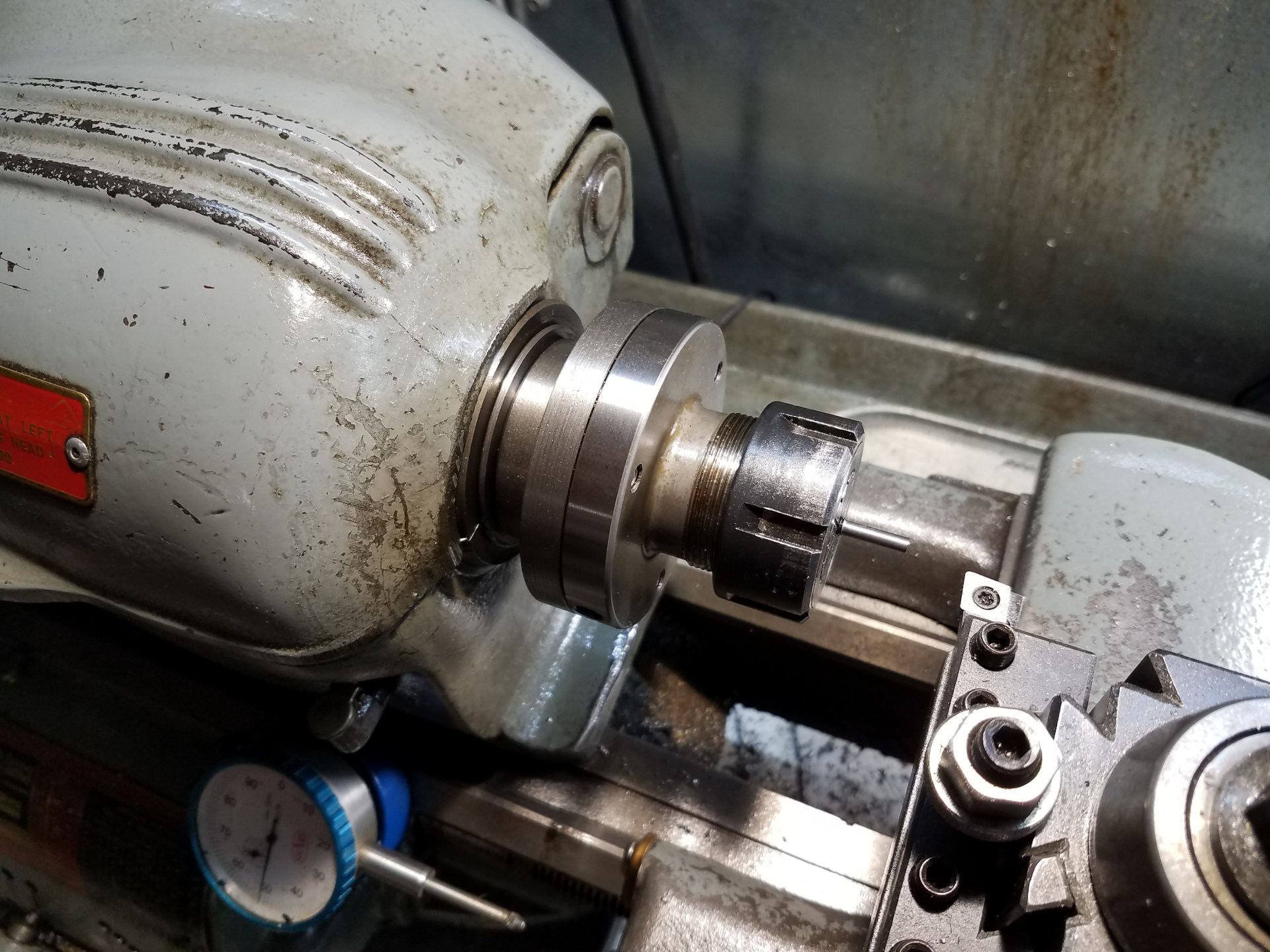
A socket head cap screw had the cap removed with a hacksaw and it is now held in the ER-32 collet chuck so the diameter can be been turned down to the appropriate size for the thread. I like to use cap screws as a base for this type of work because they are made of good metal and are usually straight.

The left-handed 8-32 thread has been cut into the rod using the single-point method on the lathe mainly because I don't have a 8-32 LH threading die. Since this is a left handed thread, the lead screw on the lathe had been reversed with the cutter starting in the thread relief and moving towards the tail stock while the work is turning in the usual direction. Remember, if the spindle and lead screw are turning in the same direction, the lathe will cut a right handed thread. If the spindle and lead screw are turning in opposite directions, the lathe will cut a left handed thread.
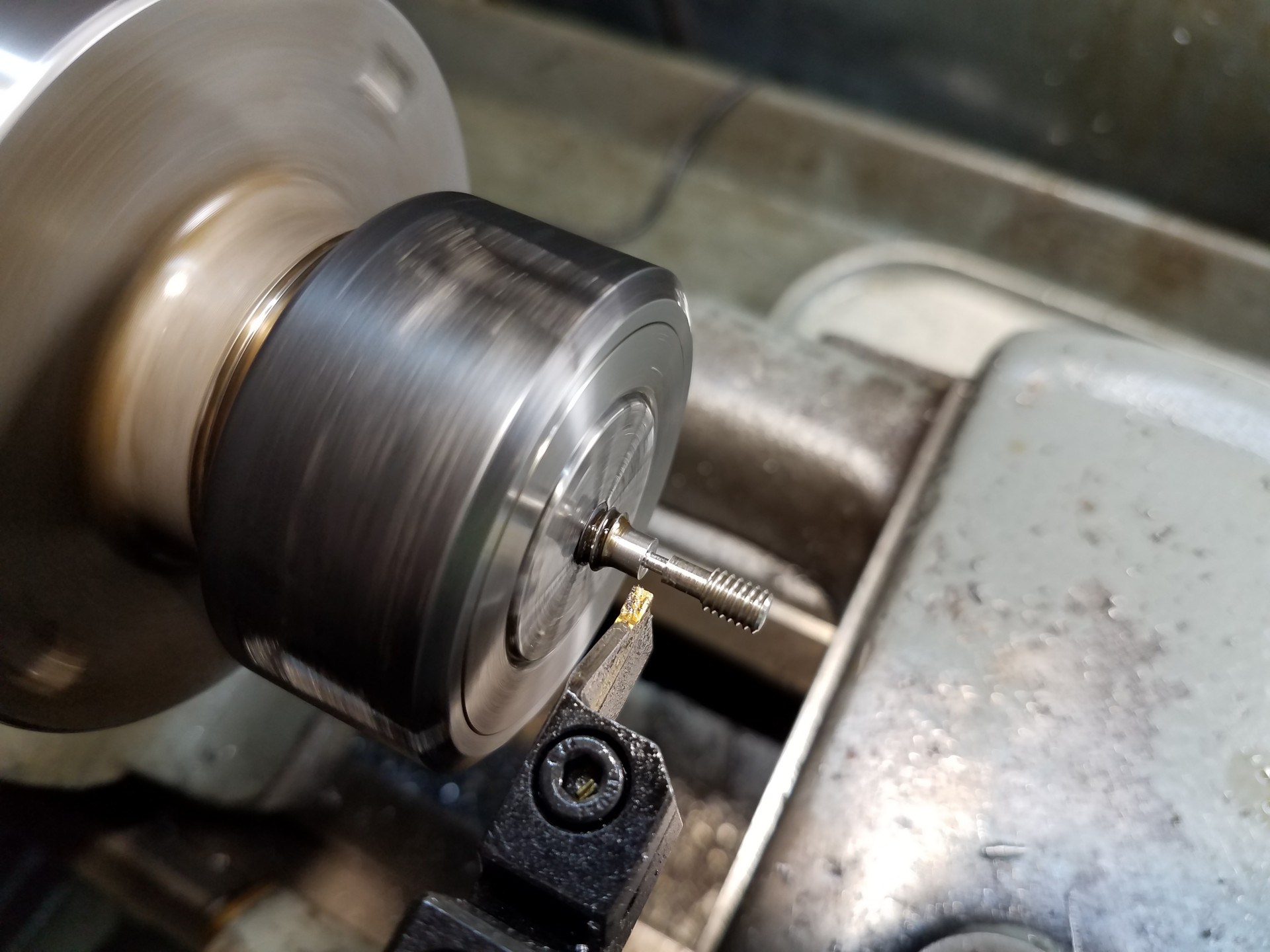
Here the newly threaded portion is ready to be parted-off. The skinny section at the left of the thread will go inside the threaded part of the handle.
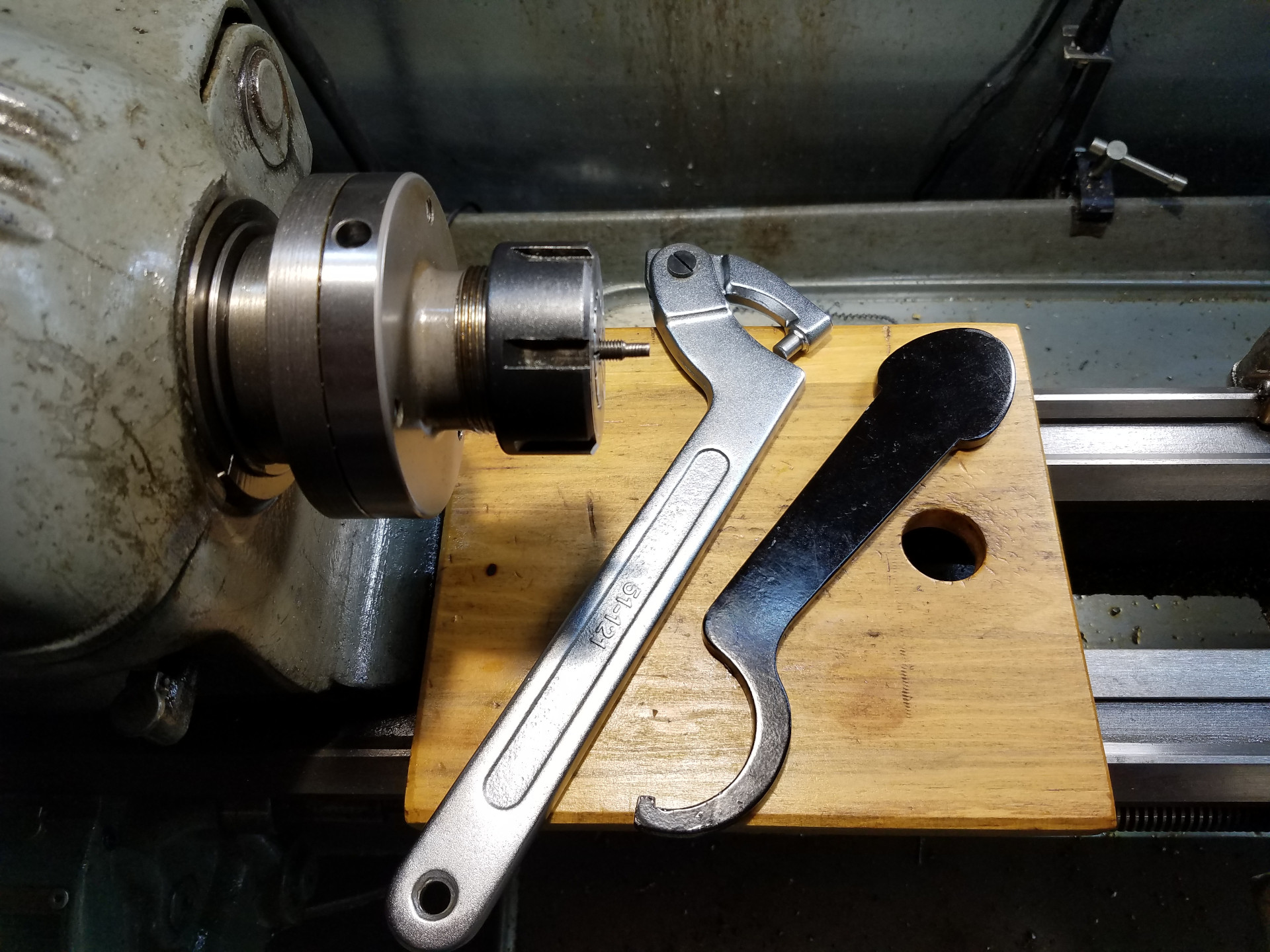
The handle is held with the ER-32 collect chuck with the knurled part of the handle inside the spindle. ER-32 collets are great at holding work whose diameter isn't at a nominal size as they have a much greater working range than normal collets.
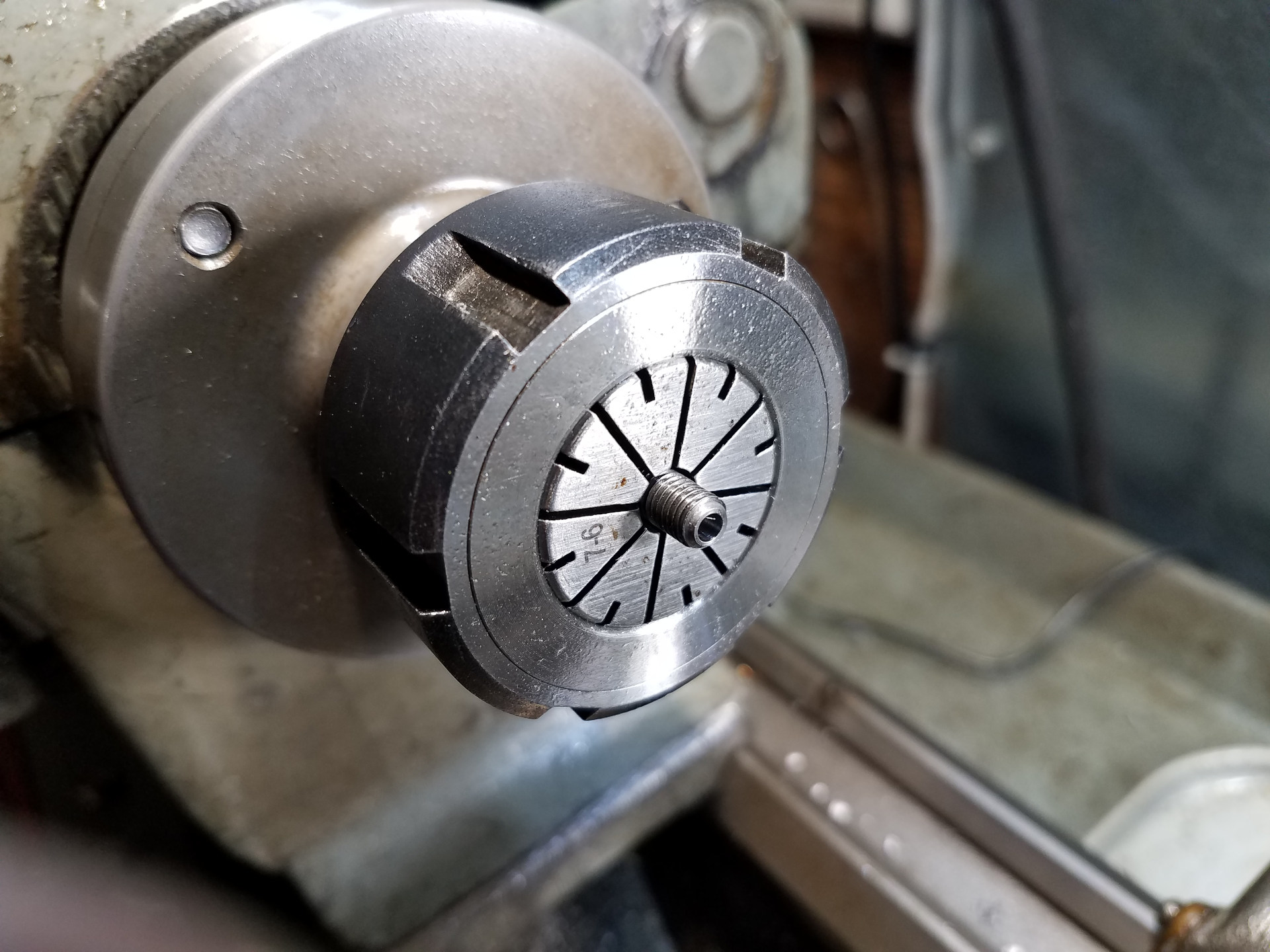
The knackered thread has been removed and a hole has been drilled and reamed for the new threaded part.

The newly threaded portion has been permanently attached to the handle with green Loctite 648.
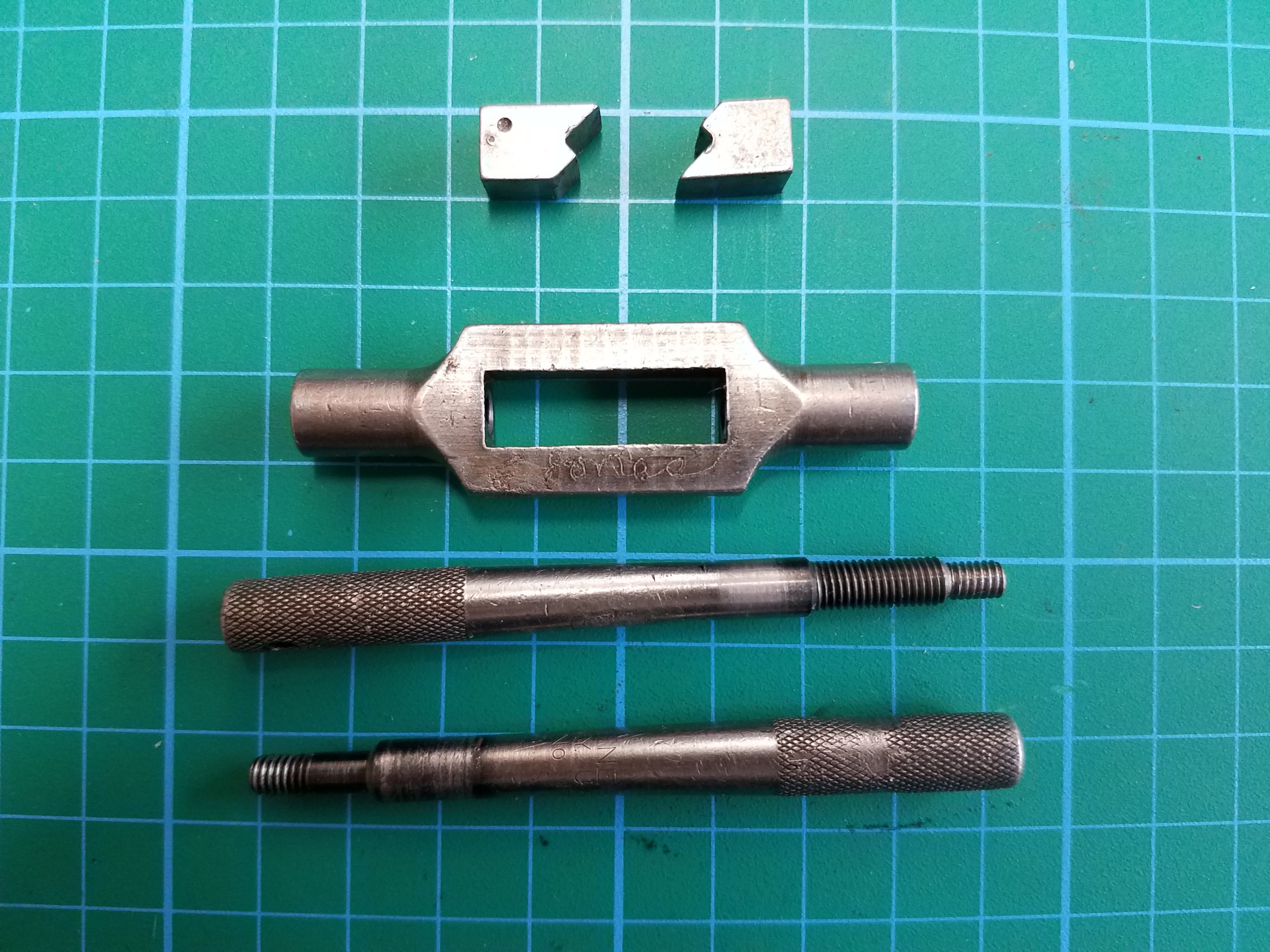
Here the General 170 Tap Wrench has been completely disassembled, cleaned and is ready for reassembly. The right handle and jaw have to be removed from the jaw holder so the moving jaw can be correctly "clocked" onto the threads of the handle.
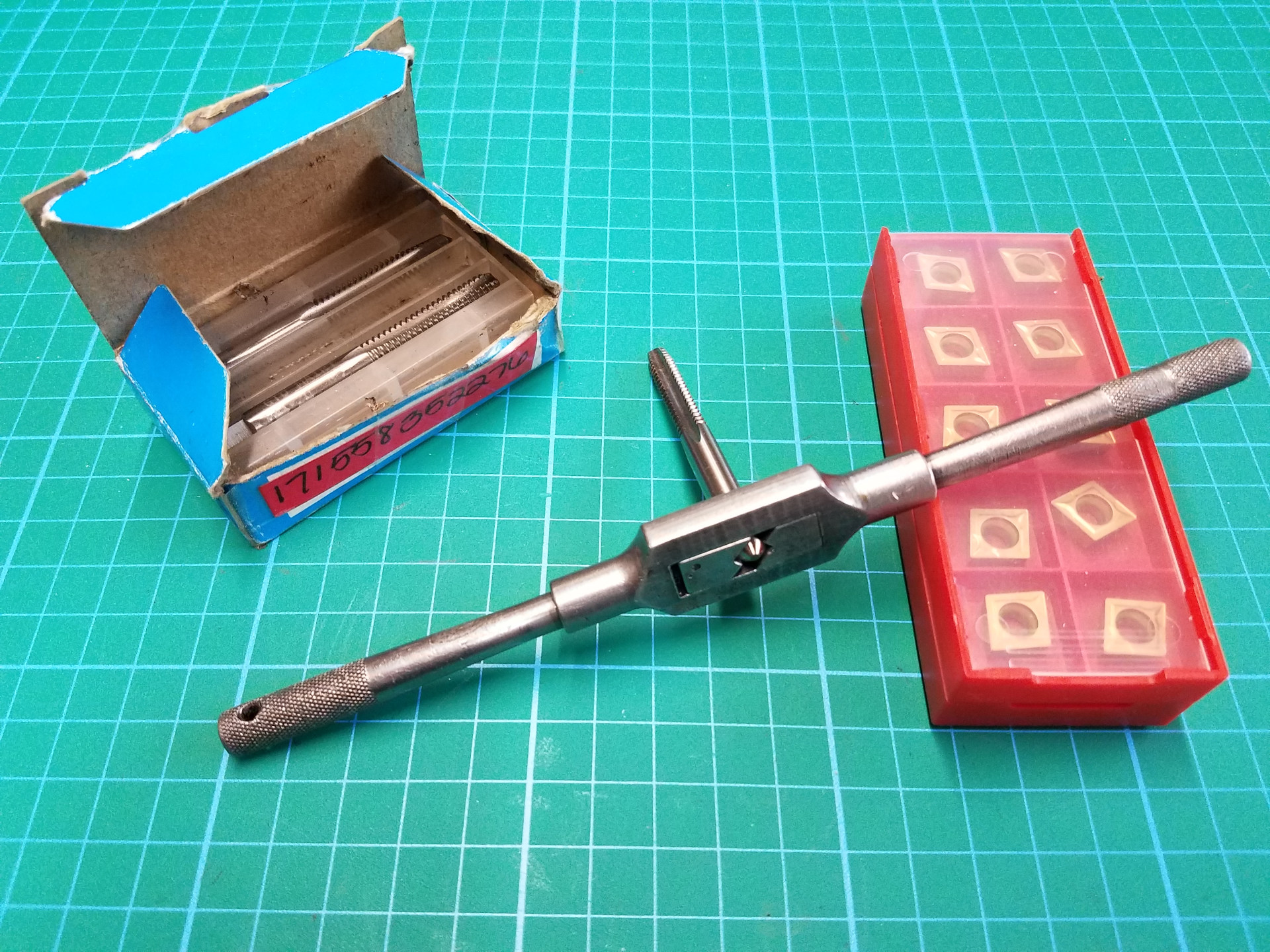
The repaired tap wrench holding a tap. Works like a new one! Actually, better than new as the current General tool lineup is cheap, imported shite constructed of soft pot metal.

The General 170 Tap Wrench is a perfect size increment between the other smaller Starrett wrenches in my tap wrench collection.
I enjoy repairing quality items and had a fun afternoon making this old tap wrench a useful tool again.